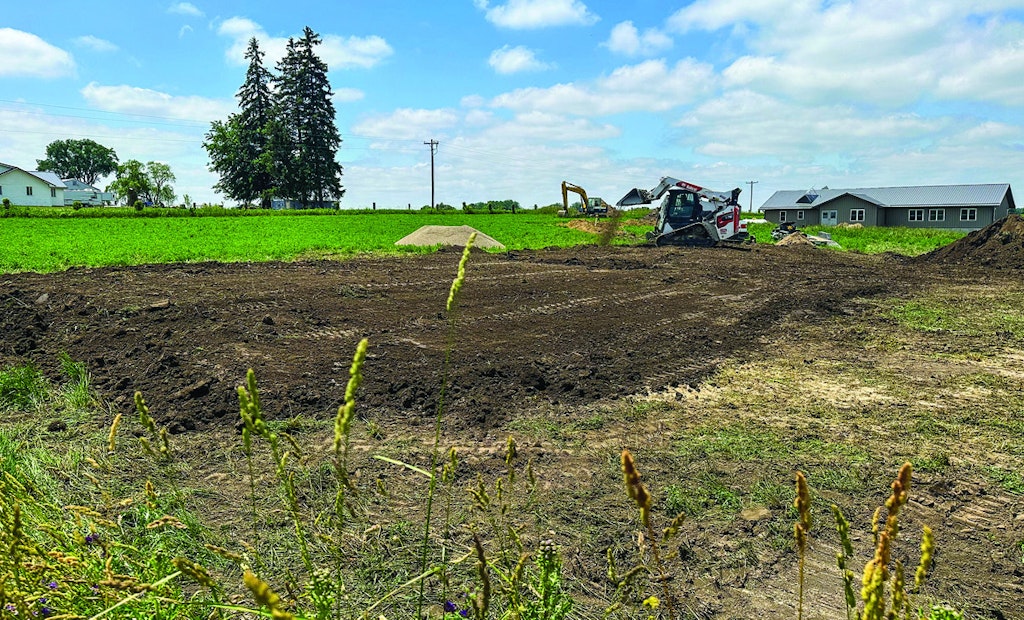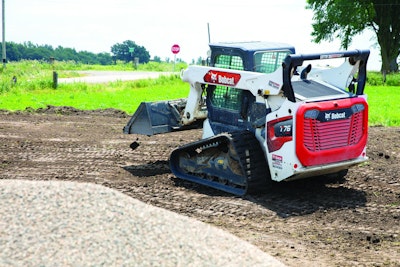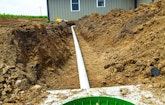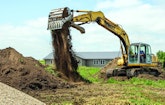
Anthony Bontrager in the Bobcat E55 compact crawler excavator throws topsoil on the Presby treatment bed, while Jay Bontrager uses the Bobcat T76 compact track loader to level it.
An Amish farmer donated three acres of his agricultural fields in Ligonier, Indiana, for a new school accommodating 40 students and two live-in educators. The building had two indoor restrooms and two bedrooms.
The site also would have a stable, small and large softball diamonds,...









